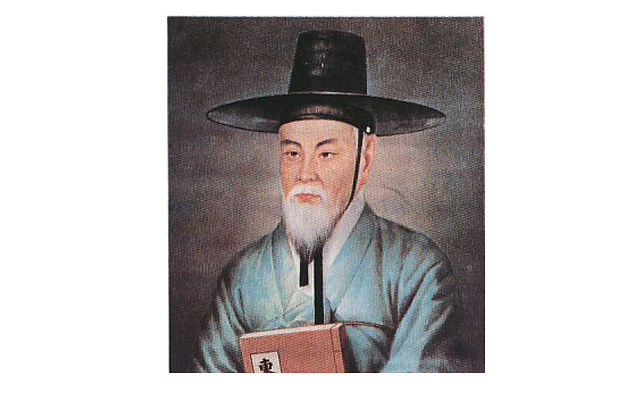
A Manual to Practice Sasang Constitutional Medicine Patterns ①
Personalized Diagnose, Treatment, and Prevention of Disease By Korean Medicine
By Namwook Cho L.Ac
Based on Sasang Constitutional Medicine Patterns, the content will be introduced in the order of clinical considerations for diagnosis, treatment of each Sasang Constitutional pattern, and prevention of each Sasang pattern.
Also, manuals for treatment by herbal medicine, acupuncture, and moxa depending on Sasang constitutions for the symptoms frequently seen in an acupuncture clinic in the US, such as stroke, obesity, diabetes, hyperlipidemia, etc., will be introduced.
Diagnosis of ordinary and present symptomatology is recommended based on the expert group consensus for the diagnosis and treatment decision of Four constitutional medicine patterns.
Overview
Constitutional medicine patterns of the four constitutions have different sub-classification systems, resulting in different pathological patterns and different treatment and prevention methods.
For those who complain of specific diseases or symptoms or those with risk factors for specific diseases or constitutional medicine patterns through the process of diagnosis and evaluation of Four constitutional types and Four constitutional medicine patterns, each constitutional type received the different herbal medicine, acupuncture treatment, moxibustion treatment, constitutional diet therapy,
constitutional exercise therapy, and constitutional Seong-Jeong therapy, etc. In addition, to prevent and manage Four constitutional medicine patterns, constitutional diet therapy, constitutional exercise therapy, constitutional Seong-Jeong therapy, etc., are implemented.
Clinical considerations
- Four constitutional medicine patterns are diagnosed based on the present symptomatology, and the treatment is decided in consideration of the ordinary symptomatology. Present symptomatology refers to important symptoms at the time of diagnosis, and ordinary symptomatology refers to symptoms that can infer the usual physiological and pathological conditions.
- Ordinary symptomatology of Small yin [Soeum] type is classified into Exterior heat, Exterior disease unfavorable pattern, Interior cold, and Interior disease unfavorable pattern ordinary symptomatology.
- Ordinary symptomatology of Small yang [Soyang] type is classified into Exterior cold, Exterior disease unfavorable pattern, Interior heat, and Interior disease unfavorable pattern ordinary symptomatology.
- Ordinary symptomatology of Large yin [Taeeum] type is classified into Exterior cold [Esophagus cold], Exterior disease unfavorable pattern, Interior heat [Liver heat], and Interior disease unfavorable pattern ordinary symptomatology.
- Ordinary symptomatology of Large yang [Taeyang] type is classified into Lower back disease, Exterior disease unfavorable pattern, Small intestine disease, and Interior disease unfavorable pattern ordinary symptomatology.
- For diagnosing the ordinary symptomatology according to Four constitutional types, <Diagnostic criteria for the ordinary symptomatology of Small yin [Soeum] type>, <Diagnostic criteria for the ordinary symptomatology of Small yang [Soyang] type>, <Diagnostic criteria for the ordinary symptomatology of Large yin [Taeeum] type>, and <Diagnostic criteria for the ordinary symptomatology of Large yang [Taeyang] type> can be referred.
- According to the middle classification level of the Four constitutional medicine classification system, Small yin [Soeum] type patterns are classified into Congestive hyper psychotic pattern, Yang depletion pattern, Greater yin pattern, and Lesser yin pattern. Small yang [Soyang] type patterns are classified into Lesser yang wind damage pattern, Yin depletion pattern, Chest heat congested pattern, and Yin deficiency diurnal fever pattern. Large yin [Taeeum] type patterns are classified into Esophagus cold
pattern, Esophagus cold-lung dryness pattern, Liver heat pattern, and Liver heat-lung dryness pattern. Large yang [Taeyang] type patterns are classified into a Lower back favorable pattern, Lower back unfavorable pattern [Pseudo-paraparesis], Small intestine favorable pattern, and Small intestine unfavorable pattern [Regurgitation disease].
- <Diagnostic criteria for Small yin [Soeum] type patterns>, <Diagnostic criteria for Small yang [Soyang] type patterns>, <Diagnostic criteria for Large yin [Taeeum] type patterns>, and <Diagnostic criteria for Large yang [Taeyang] type patterns> can be referred.
Evaluation of severity and improvement of ordinary and present symptomatology is recommended based on the expert group consensus for determining the treatment efficacy and prognosis of Four constitutional medicine patterns.





































